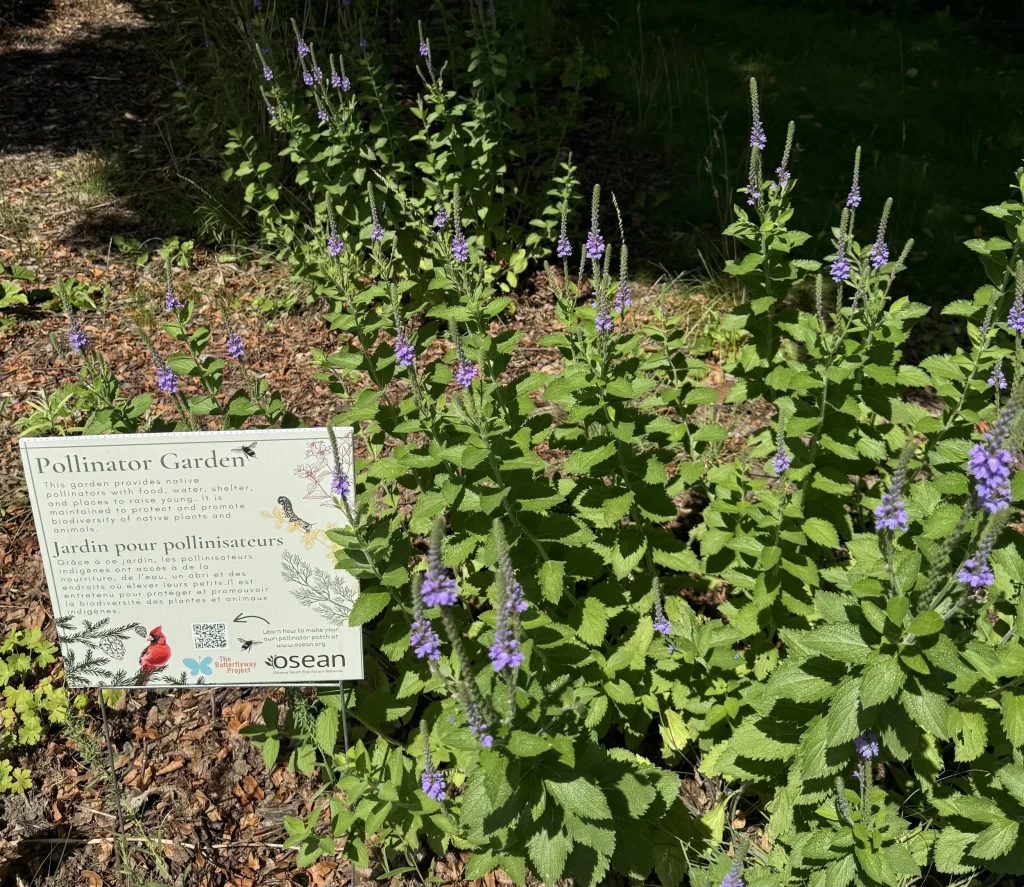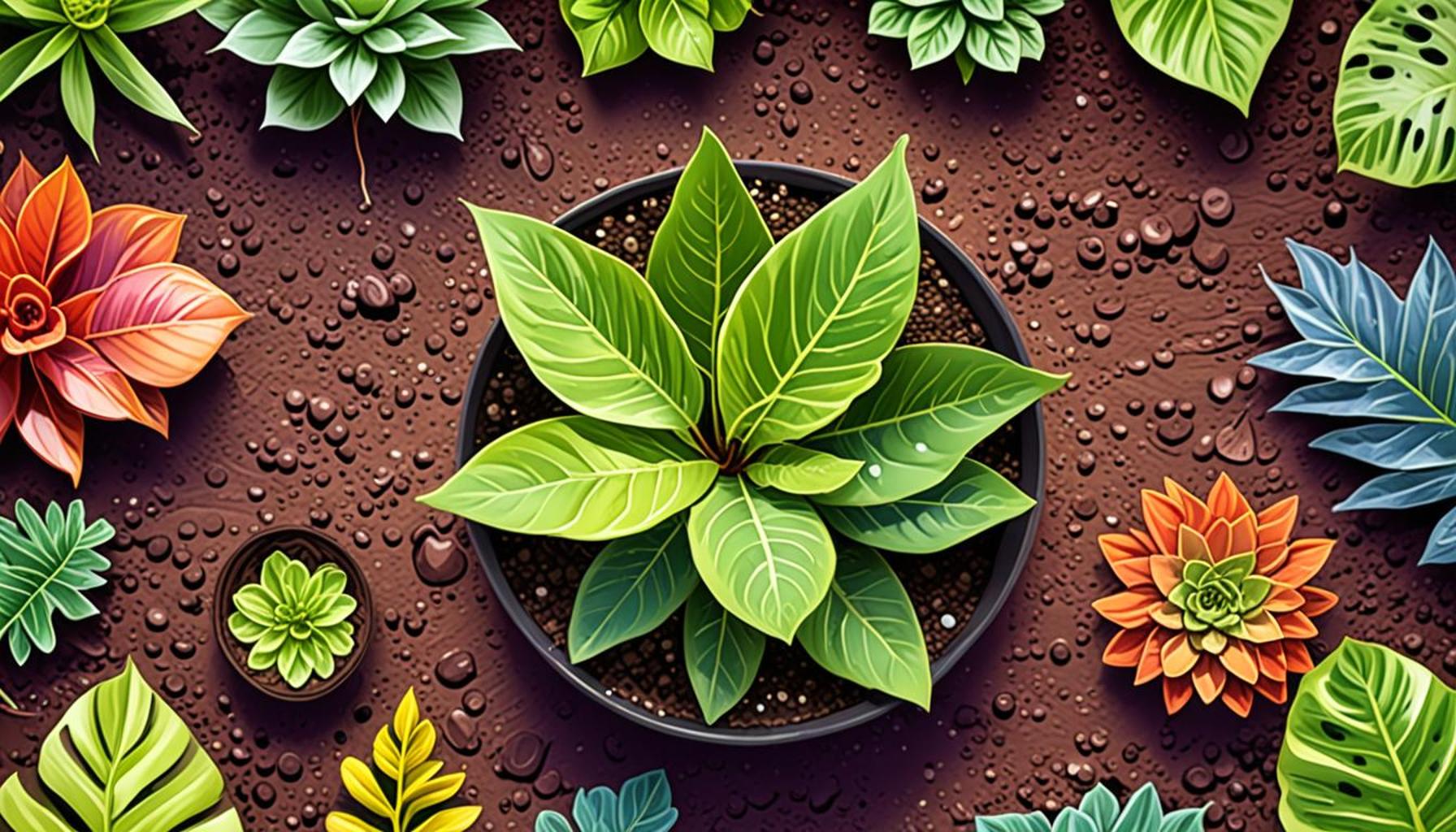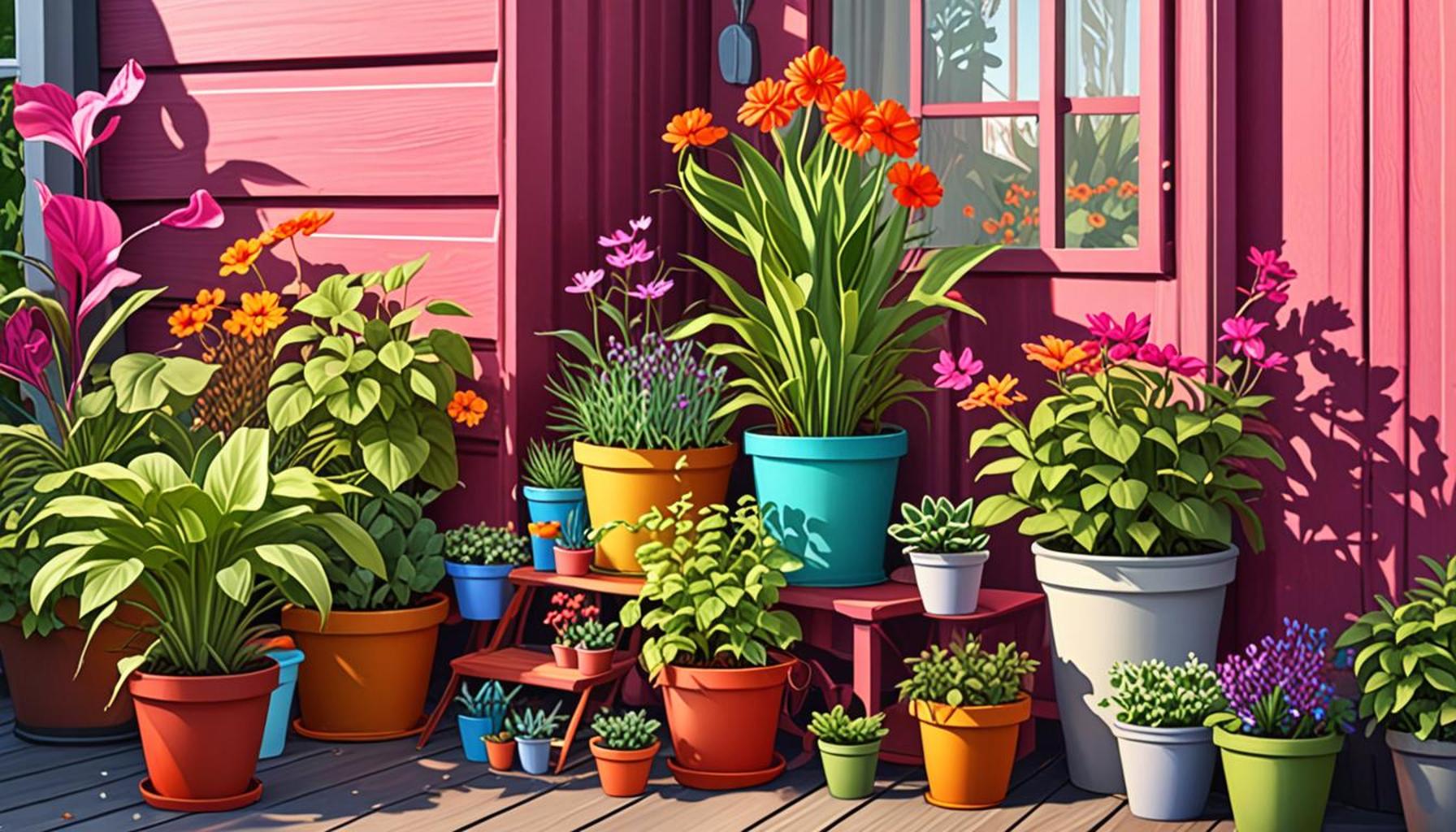Selection of native plants to promote biodiversity in your garden

The Importance of Selecting Native Plants
Creating a vibrant garden begins with the selection of native plants. These local species not only thrive in specific climates but also play a vital role in enhancing biodiversity. By choosing native plants, gardeners contribute to the local ecosystem and provide essential resources for various wildlife, from pollinators to mammals.
Why choose native plants? Consider the following benefits:
- Water Efficiency: Native plants are adapted to local soil and climate conditions, requiring less water and maintenance. For instance, in arid states like Arizona, plants such as the Saguaro Cactus are not only drought-resistant but store water efficiently, reducing the need for irrigation.
- Habitat Provision: They serve as food and shelter for local birds, insects, and other wildlife. The Milkweed, for example, is crucial for the survival of the Monarch butterfly, providing both a breeding ground and nourishment for its caterpillars.
- Soil Health: Native plants promote healthy soil by supporting beneficial microbial activity. Their extensive root systems help prevent erosion and improve soil structure, which in turn benefits other plants in the vicinity. For instance, planting Eastern Prairie Blazing Star can enhance soil quality while adding stunning color to the garden.
In the United States, many states offer extensive lists of native plants ideal for local gardens. Some popular examples include:
- Black-eyed Susan: A hardy perennial that attracts a variety of pollinators like bees and butterflies, making it a favorite among gardeners aiming to boost local ecosystems.
- Butterfly Weed: Known for its bright, orange flowers, this plant is essential for attracting butterflies and other pollinators, reinforcing the critical role native plants play in supporting pollinator populations that are vital to our food systems and plant reproduction.
- Eastern Red Cedar: This evergreen provides shelter and nesting sites for numerous bird species, making it an invaluable component of bird-friendly gardens across the eastern United States.
Incorporating these species into your garden enhances not only its beauty but also its ecological value. A garden filled with native plants can become a sanctuary for local wildlife, promoting a balanced ecosystem right in your backyard. This relationship between plant choice and wildlife support is crucial, especially as many native species face threats from habitat loss and climate change.
Join us as we explore the selection of native plants that can transform your space into a thriving habitat for local wildlife. Delve deeper into local gardening resources or visit a nearby nursery that specializes in native species to learn more about how you can make a difference in preserving biodiversity.

DIVE DEEPER: Click here for essential tools
Choosing the Right Native Plants for Your Garden
When it comes to the selection of native plants, it’s essential to recognize that not all native species are created equal for every garden setting. The effectiveness of native plants in promoting biodiversity largely depends on factors such as climate, soil type, and local wildlife needs. Before you plant, take the time to understand this intricate relationship between plants and their environment.
Start by assessing your garden’s specific conditions. Consider elements such as sun exposure, moisture levels, and the type of soil available. For instance, if your garden is mostly sunny and well-drained, you may want to explore options like Coneflowers and Coral Bells. Both are not only visually striking but also attract a variety of beneficial insects and pollinators.
Research Local Flora
One of the best ways to select suitable native plants is to leverage local resources. Regional extension offices, native plant societies, and university horticulture departments often provide detailed lists of native plants that flourish in specific areas. This can save you time and ensure that you’re choosing plants which will thrive in your garden’s unique environment.
As you dive deeper into the available flora, consider incorporating a variety of plant types, such as:
- Perennials: Plants that come back year after year, like Black-eyed Susans and Wild Geraniums, can provide continuous food sources for pollinators.
- Shrubs: Look for native shrubs like Blueberry and Serviceberry, which not only support local wildlife but offer delicious fruit for you as well.
- Grasses: Incorporating native grasses like Prairie Dropseed helps create a diverse habitat for insects and other small animals while requiring minimal maintenance.
Using a mix of these native plants creates structural diversity within your garden, offering various levels of habitat for wildlife. Taller plants provide shelter, while lower-growing species can serve as ground cover, benefitting insects and microorganisms in the soil. Meanwhile, the diversity of flowering times among native plants ensures that your garden remains attractive to pollinators throughout the growing season.
Benefits Beyond Biodiversity
By moving away from traditional landscaping habits and embracing the selection of native plants, you are not just creating aesthetically pleasing spaces but also championing ecological health. Native gardens serve as corridor habitats, connecting patches of wilderness, which allow for species movement and genetic diversity critical for resilience against environmental changes.
In addition to their vital role in promoting biodiversity, native plants also require less chemical intervention, lowering the need for pesticides and fertilizers. This ultimately means a healthier garden environment and a reduced environmental footprint. The synergistic relationship between native plants and local wildlife highlights just how crucial these selections are in fostering harmony at the local ecological level.
Selecting the right native plants is a crucial step towards creating a thriving garden that supports biodiversity. By understanding your local ecosystem and incorporating a variety of native species, you can enjoy a flourishing green space while also contributing to the health of the planet.
| Advantage | Details |
|---|---|
| Support Local Wildlife | Native plants provide essential habitats and food for local fauna, including birds, insects, and mammals, promoting healthy ecosystems. |
| Low Maintenance | Once established, native plants require less water and fewer chemicals, making them an eco-friendly choice for gardens. |
| Soil Health Improvement | Deep-rooted natives improve soil structure and promote nutrient cycling, aiding in sustainable gardening practices. |
| Climate Resilience | Native plants are adapted to local climates, making them more resilient to climate change effects, such as drought or pest outbreaks. |
Incorporating native plants into your garden not only fosters biodiversity but contributes to a sustainable gardening practice that benefits the environment. As you learn more about these plants, you will discover how they work in synergy with local ecosystems, paving the way for a thriving garden that is both beautiful and beneficial. Explore the myriad of options available and consider how each native species can play a vital role in enhancing biodiversity in your outdoor space.
LEARN MORE: Click here to discover common garden pests
Enhancing Ecosystem Services with Native Plants
Incorporating native plants into your garden not only supports biodiversity but also enhances essential ecosystem services that benefit both your garden and the larger environment. For example, native plants play a crucial role in improving soil health and water management, which are vital for sustaining a vibrant garden.
Soil Health and Nutrient Cycling
Many native plant species have deep root systems that help improve soil structure and promote nutrient cycling. These extensive root systems can reach water and nutrients unavailable to shallow-rooted plants, effectively drawing in resources and making them accessible for other plants in your garden. Furthermore, the decomposing leaf litter from native plants contributes organic matter to the soil, enhancing its fertility over time.
Another fascinating benefit of native plants is their ability to attract a variety of soil organisms, including earthworms and beneficial microorganisms. These tiny allies enhance soil aeration and provide essential services that support plant life. For example, an abundance of earthworms can enrich the soil with vital nutrients while improving drainage, which is particularly valuable in areas prone to heavy rainfall or flooding.
Water Conservation Strategies
Choosing native plants can also significantly reduce your garden’s water requirements. Many native species have evolved to thrive under local climatic conditions, making them more drought-resistant than non-native counterparts. By utilizing a selection of native plants such as Milkweed and Sea Oats, you can create a garden that requires less irrigation, thus conserving water resources and reducing your overall water bill.
Moreover, some native plants are excellent for rain gardens, an effective strategy for managing stormwater runoff. These gardens not only offer a striking aesthetic but also serve a practical purpose by capturing excess rainwater and allowing it to infiltrate into the ground rather than overwhelm drainage systems or erode soil. This promotes groundwater recharge and minimizes pollution from runoff entering local waterways.
Creating Habitats for Local Fauna
By selecting appropriate native plants, you can establish habitats that cater to local wildlife’s needs. For instance, incorporating native flowering plants such as Butterfly Weed or Bee Balm will attract not only pollinators but also various insects that are integral parts of the food web. These insects serve as food sources for birds, small mammals, and other wildlife in your garden ecosystem.
Furthermore, native plants provide essential nesting materials and sites for birds, while many mammals and reptiles rely on the shelter they offer. Creating a well-planned layering of vegetation — through trees, shrubs, and ground cover — can maximize habitat availability for different species within your garden. This interplay of plant selections creates a mini-ecosystem where each organism plays a role in maintaining ecological balance.
Engaging with Community and Educating Others
As you cultivate your native plant garden, consider how you can share the knowledge and positive impacts of your choices with others in your community. Engage with local gardening groups or participate in community outreach to spread awareness about the advantages of using native plants. Community workshops or garden tours can pique interest and encourage more residents to adopt biodiversity-friendly practices.
By transforming your garden into a native plant sanctuary and sharing your journey, you contribute to a larger movement of promoting biodiversity on a regional scale. The collective action of many individuals planting native species can create a ripple effect, strengthening the resilience of ecosystems across neighborhoods, cities, and beyond.
DISCOVER MORE: Click here to learn about DIY pest deterrents
Conclusion: A Flourishing Future with Native Plants
Incorporating native plants into your garden is not merely a step towards personal aesthetic enhancement; it is a vital commitment to fostering a rich tapestry of biodiversity. By opting for local flora, you actively contribute to the health of your local ecosystem and the well-being of countless species that depend on these plants for food, shelter, and sustenance. The myriad benefits of native plants, ranging from improved soil health and water conservation to providing essential habitats for wildlife, underscore their necessity in sustainable gardening practices.
Moreover, by selecting native plant species, you champion a movement that encourages community engagement and environmental stewardship. Sharing your experiences and successes can empower others to re-imagine their gardens as sanctuaries of biodiversity, sparking interest and action within your community. As urban spaces expand and natural habitats shrink, your garden can serve as a crucial refuge for pollinators and other wildlife, maintaining ecological balance in an ever-changing world.
As you embark on the journey of enhancing your garden with native plants, consider the influence of your choices not just within your outdoor space but on a grander scale. Each seed you plant is a step towards restoring nature’s integrity, ensuring that vibrant ecosystems can thrive and provide essential benefits for generations to come. Embrace the art of native gardening, and discover the unique beauty and ecological importance these plants bring to your life and the environment.



